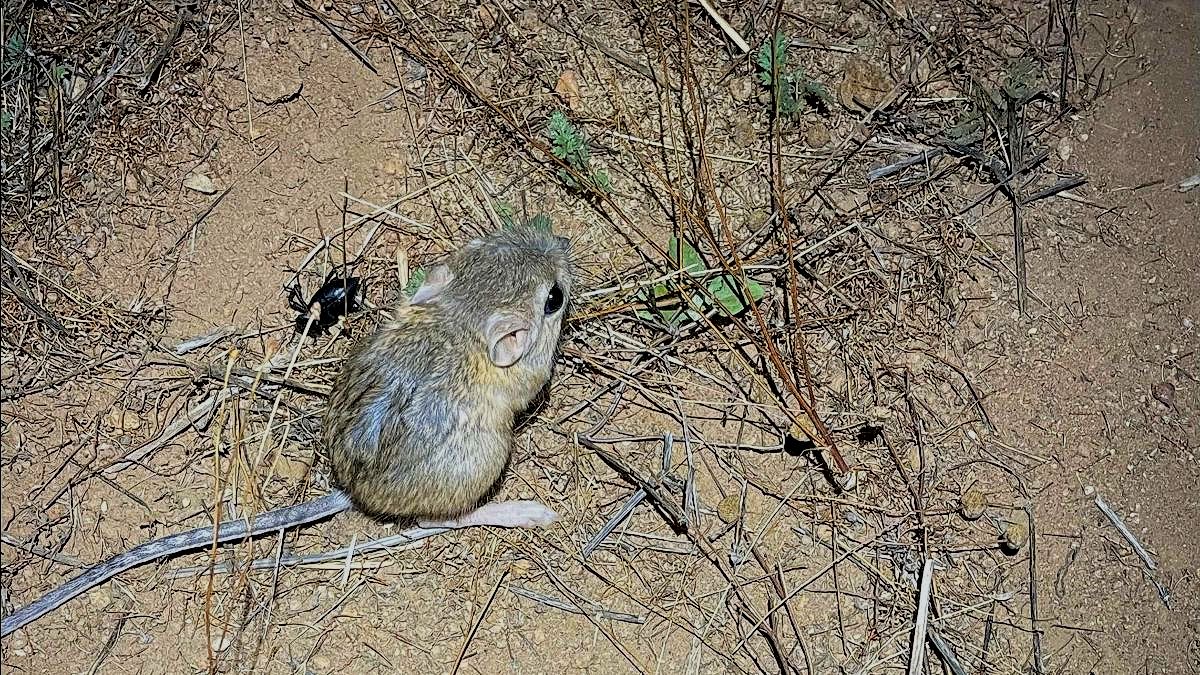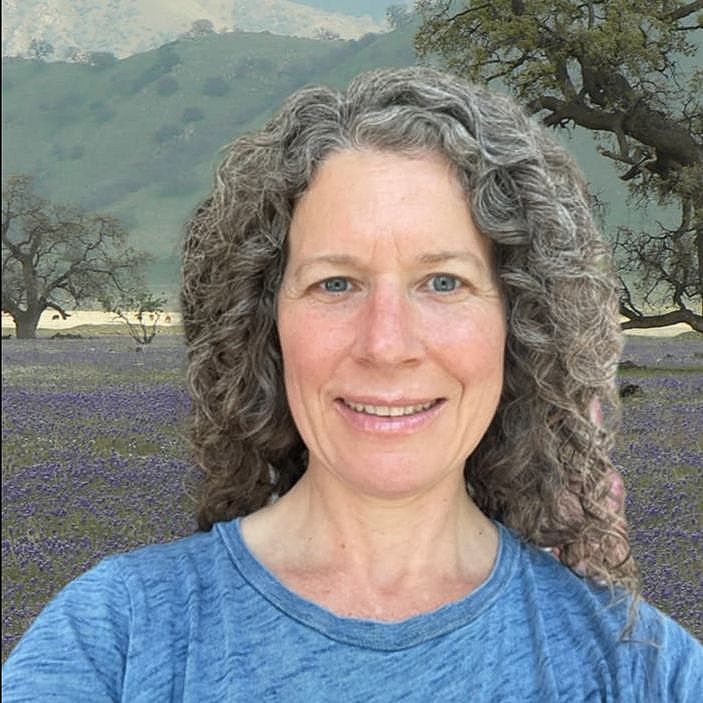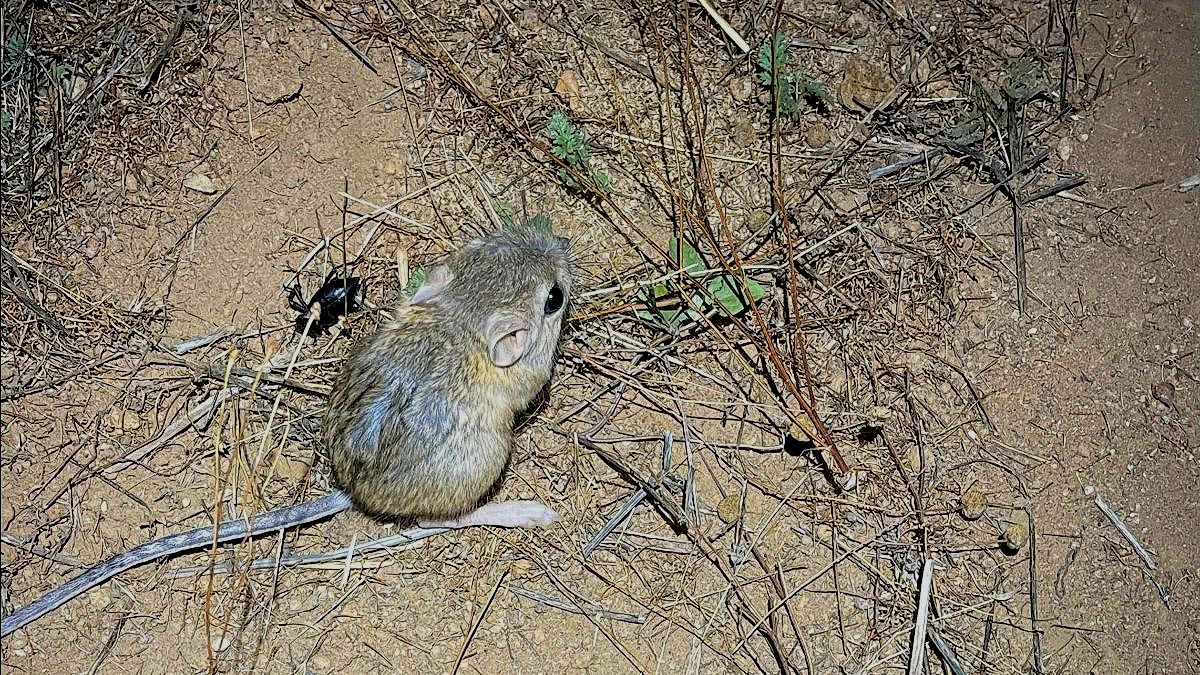It’s a Wrap!
Year 2 of Rangewide Monitoring of Stephens’ Kangaroo Rat

In September 2023, biologists from the Riverside County Habitat Conservation Agency (RCHCA) completed a second year of systematic population monitoring for the Stephens’ kangaroo rat (SKR) across the species’ range in Riverside and San Diego Counties, California. After decades of uncoordinated monitoring efforts by diverse land management agencies, this new program represents a significant milestone as the first standardized field assessment of the species’ status since it was listed as endangered more than 50 years ago. CBI designed the program in partnership with RCHCA, U.S. Bureau of Land Management, U.S. Fish & Wildlife Service, U.S. Geological Survey, Department of Defense, San Diego Zoo Global, and other experts as part of the SKR Rangewide Management and Monitoring Plan.
During 2022-23, the new monitoring program surveyed 79 randomly selected habitat sites across the range for evidence of kangaroo rats. Evidence was found on 34 of these sites, each of which was then trapped with 25 evenly spaced live-traps over two moonless nights to verify SKR occupancy and to estimate local population numbers. These first two years of data provide an unbiased view of how SKR populations vary across the landscape, establishing a sound baseline for continued annual monitoring to track population changes in response to environmental changes and management actions.
Two major patterns emerge from the data so far: (1) SKR are more common on preserves specifically managed by RCHCA and other agencies to benefit the species than on other lands that may support SKR; and (2) SKR numbers declined from 2022 to 2023, apparently due to record rainfall last winter. As biologists anticipated, the rains greatly increased the density of grasses in SKR habitat, crowding out more favorable food sources and making it difficult for kangaroo rats to move about.
Monitoring in future years will continue filling out this picture, tracking population status and trends. Hopefully, results will document a conservation success story for a species that was once so close to extinction.
Our Participatory Planning Approach in the News

It’s no secret that, over the past few years, electric vehicles have become vastly popular. At this point in time, it’s crucial not to make mineral mining – the critical resource for the batteries that power these vehicles – its own worsening environment impact on the planet. Previously, in partnership with the California state government, academic institutions, and others, CBI played a large role in a stakeholder-led process mapping least-conflict lands for solar development in the San Joaquin Valley in California. As Ethan Elkind said in his article, A California model for solar sites could be a boon for critical mineral mining, CBI’s planning tools and approach (like those used in San Joaquin Valley and more recently used in the Columbia Plateau region in Washington) could also be used as an exceptional approach to identify least-conflict lands for mineral extraction areas to ensure mineral mining is only executed at sites that would keep the procurement of these materials as ecologically sustainable as possible.
CBI Welcomes New Board Member

We are excited to welcome a new member to our Board of Directors, Mindy Weck. Mindy leads Business Development and Strategy for Hundzsoil, a pioneering firm specializing in an organic soil amendment that reduces agricultural water use by up to fifty percent and has great promise for combatting increasing water scarcity issues across many geographies. Mindy has a passion for nature-based education programming and founded the Synapse School Nature Days Program run through the Riekes Center in the California Bay Area in addition to her service to both the Wilderness Awareness School in Duvall, WA and The Hill School in Middleburg, VA. We look forward to her engagement with CBI and the opportunity to tap into her creativity and personal/professional network. Welcome, Mindy!
